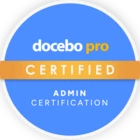One topic that has been hotly debated in training circles is the idea of forced navigation.
The idea is that you force the learner to engage with specific content before you allow them to move forward. Content is often locked until prior criteria has been met. I might refer to this as a linear.
The flip side is to make all the content available and allow the learner to choose their own path through the material. Learners may even skip some content. I might refer to this as non-linear.
Then, of course, are the hybrid options along the spectrum between these two.
If your boss or client doesn’t mandate an approach - which way would you lean and why? Would you try to convince boss or client the other way?







